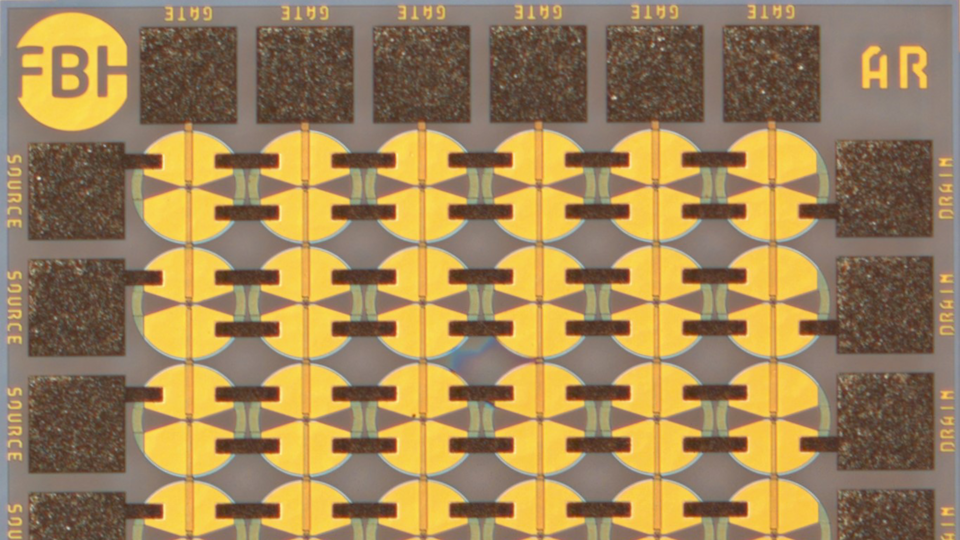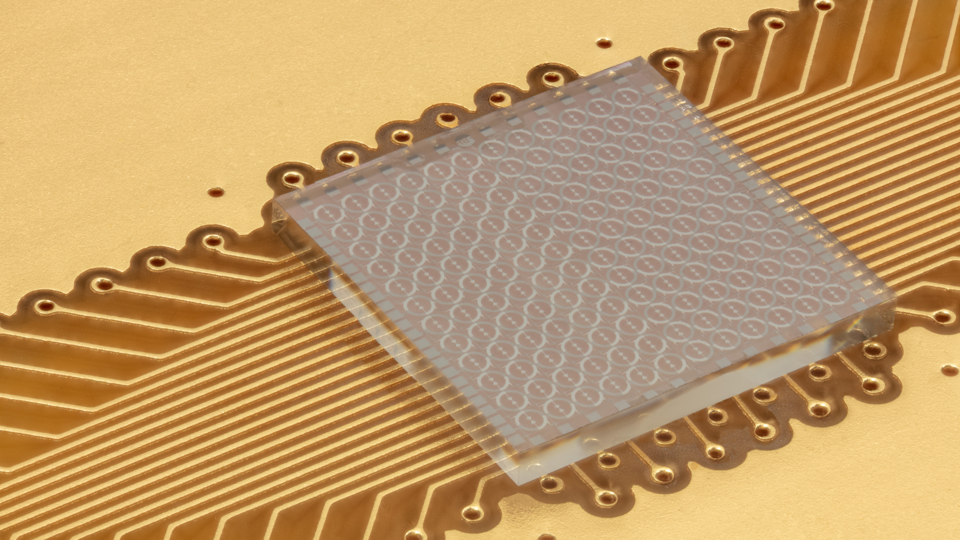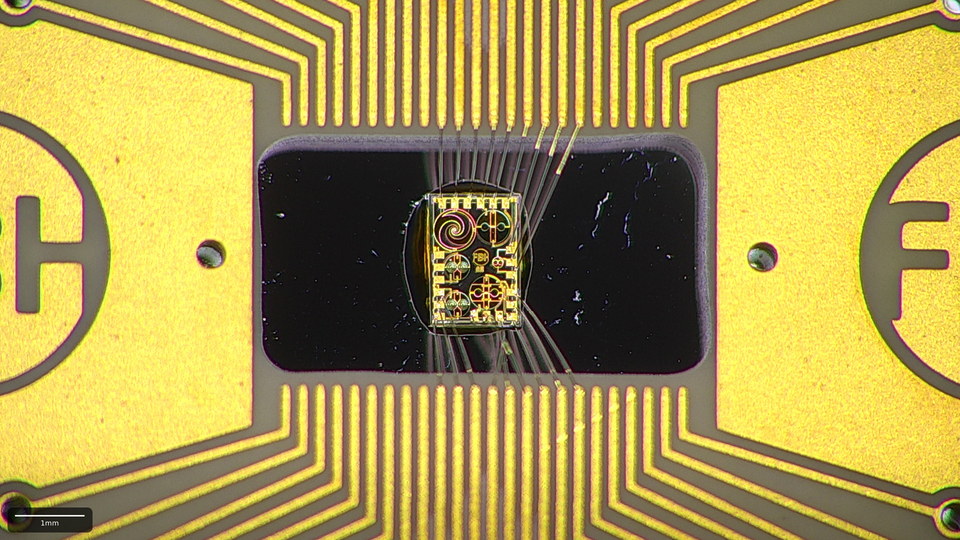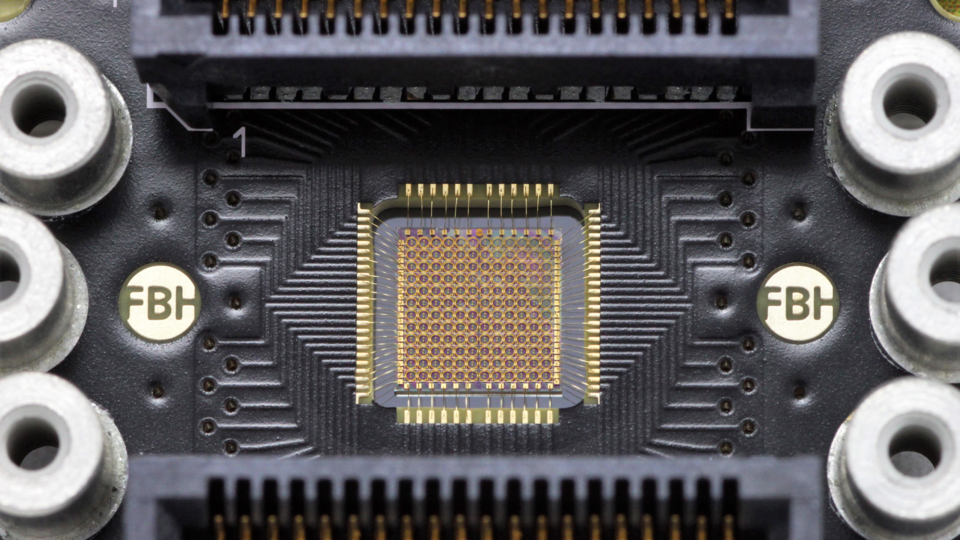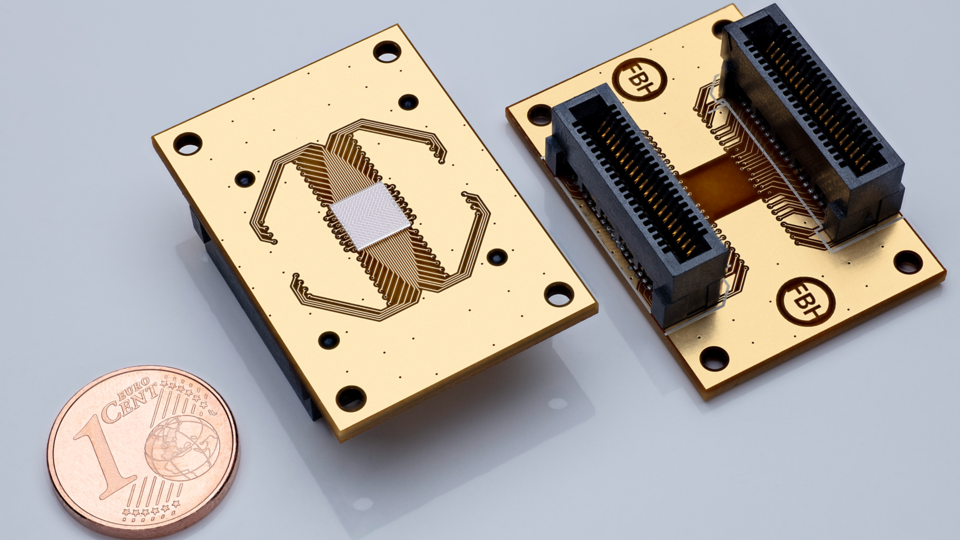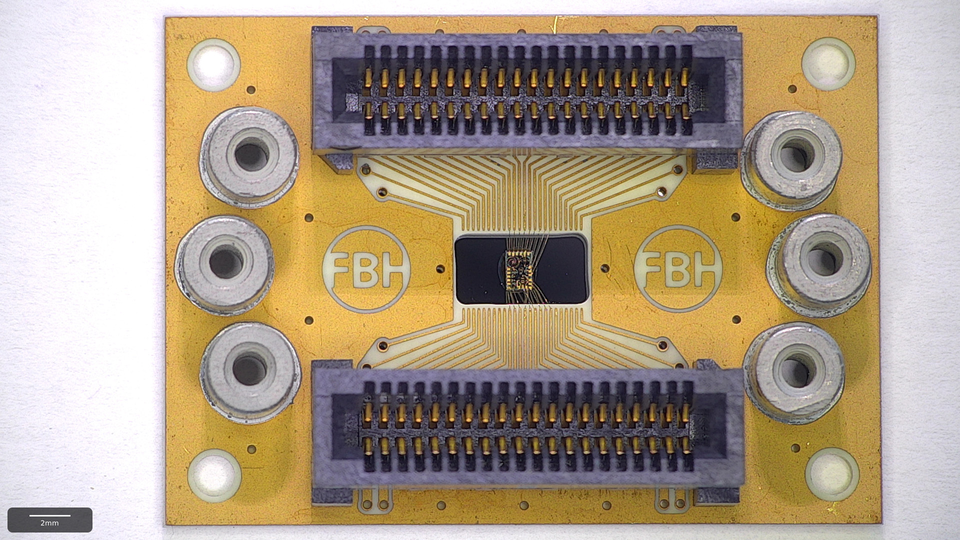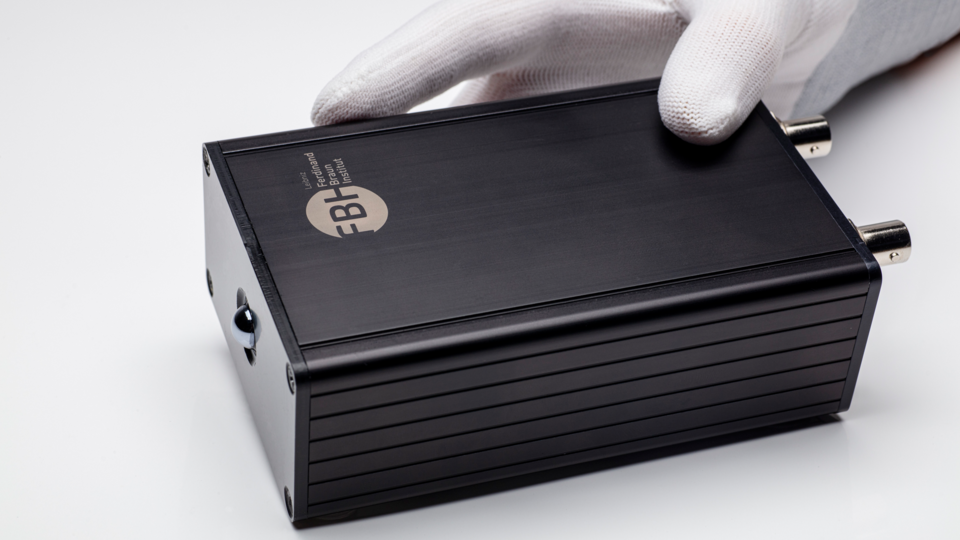THz Imaging with Transistor Detectors
We develop THz detectors based on plasmonic and resistive effects in GaN-HEMT technology for frequencies up to 2500 GHz - as narrow-band and wideband THz detectors. We also realize high-performance THz detector arrays and THz camera systems with integrated read-out electronics. All these developments are based on FBH's GaN-HEMT microwave process. In cooperation with the Goethe-Leibniz-Terahertz-Center, we have developed THz detectors with record performance in the 500 GHz - 2500 GHz range with integrated antennas and monolithic arrays.
The THz detectors exhibit very high sensitivity and a record optical noise equivalent power (NEP) performance of 26 pW/√Hz at 500 GHz with a bandwidth of 1000 GHz for individual detectors and detecor arrays.
World's first line scanner with monolithically integrated terahertz detectors for industrial applications
We have realized a unique terahertz line scanner as technology demonstrator whose detector head is based entirely on monolithically integrated THz detectors. Since the antenna structures are integrated on the chips, chip production can also be scaled efficiently and cost-effectively to larger scan line lengths.
The THz detectors can generally be realized in a frequency range from about 100 gigahertz (GHz) to 2 terahertz both broadband or narrowband. The detector spacing is defined on the chip, allowing it to be significantly smaller than conventional implementations. This, in turn, increases the image resolution
Technical details of the line scanner
- 6 cm detector line with a pixel pitch of 640 µm
- 100 GHz – 1,5 THz frequency range depending on the selected THz source
- Up to 1,5 m/s conveyor belt speed
- Up to 15,000 images/s readout speed per line
- At least 3 GHz bandwidth of the THz detectors
Line scanner for industrial applications - scan at 300 GHz
Example measurement of plastic parts scanned at 300 GHz with the line scanner.
Line scanner for industrial applications - scan at 110 GHz
Example measurement of plastic parts scanned at 110 GHz with the line scanner.
THz camera with AlGaN/GaN terahertz detector arrays
In this project an imaging demonstrator system will be realized for conveyor-based industrial applications with highest sensitivity and improved noise characteristics of the THz detector arrays. It should demonstrate the added value of the system to interested industrial customers in the THz spectral range as compared to established technologies in the visible or infrared spectral range.
The sensor demonstrator system will be multi-purpose and will be able to operate in both transmission and reflection modes. In addition, imaging for 2D and 3D reconstruction will be implemented in order to demonstrate image reconstruction beyond hardware realization. This will demonstrate the full potential of the THz spectral range.
